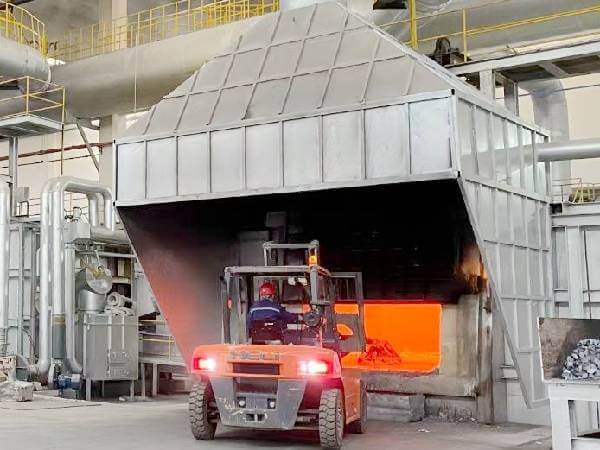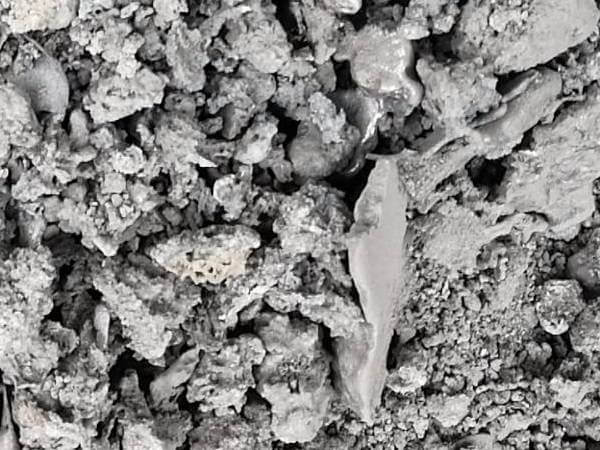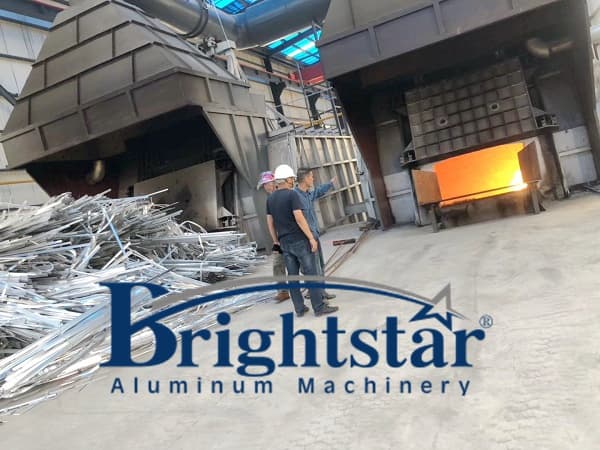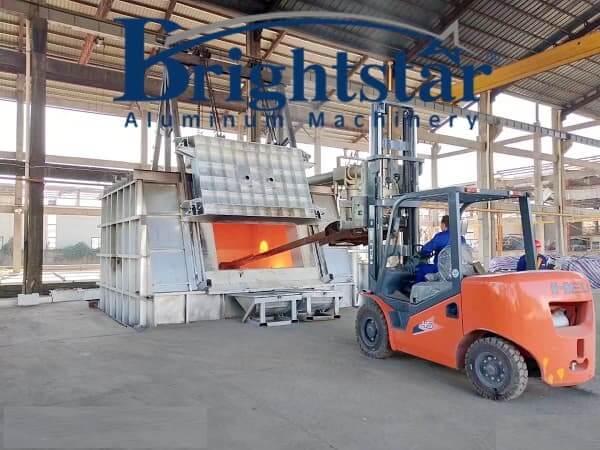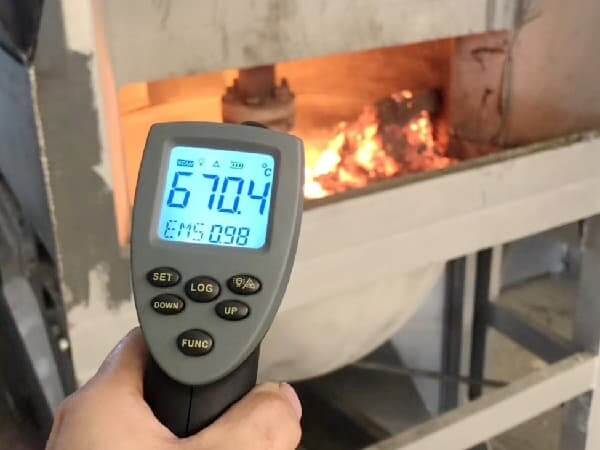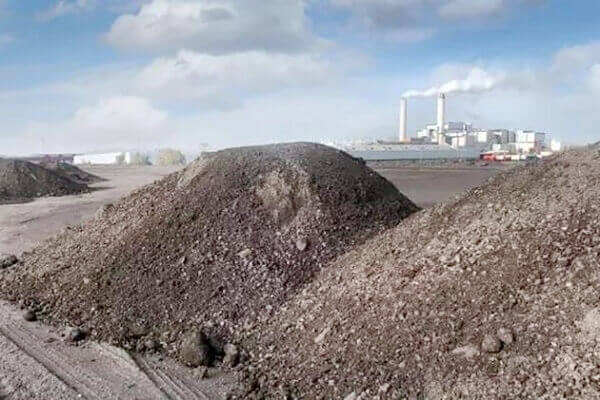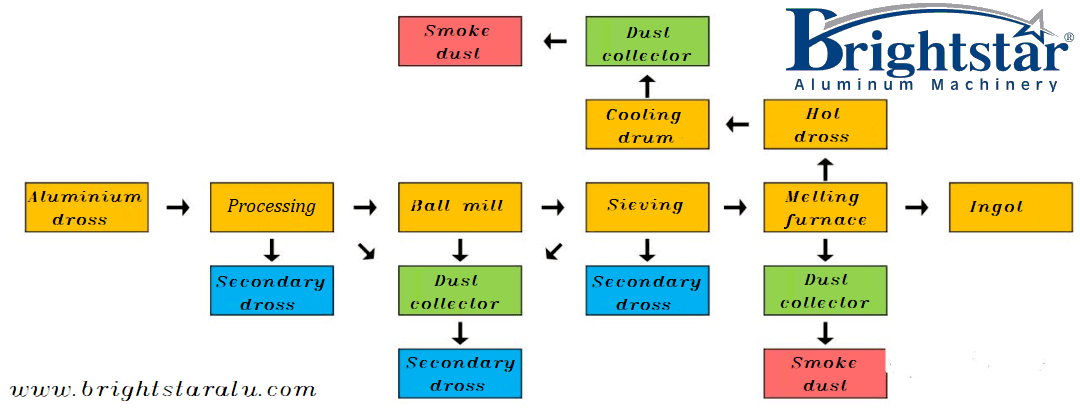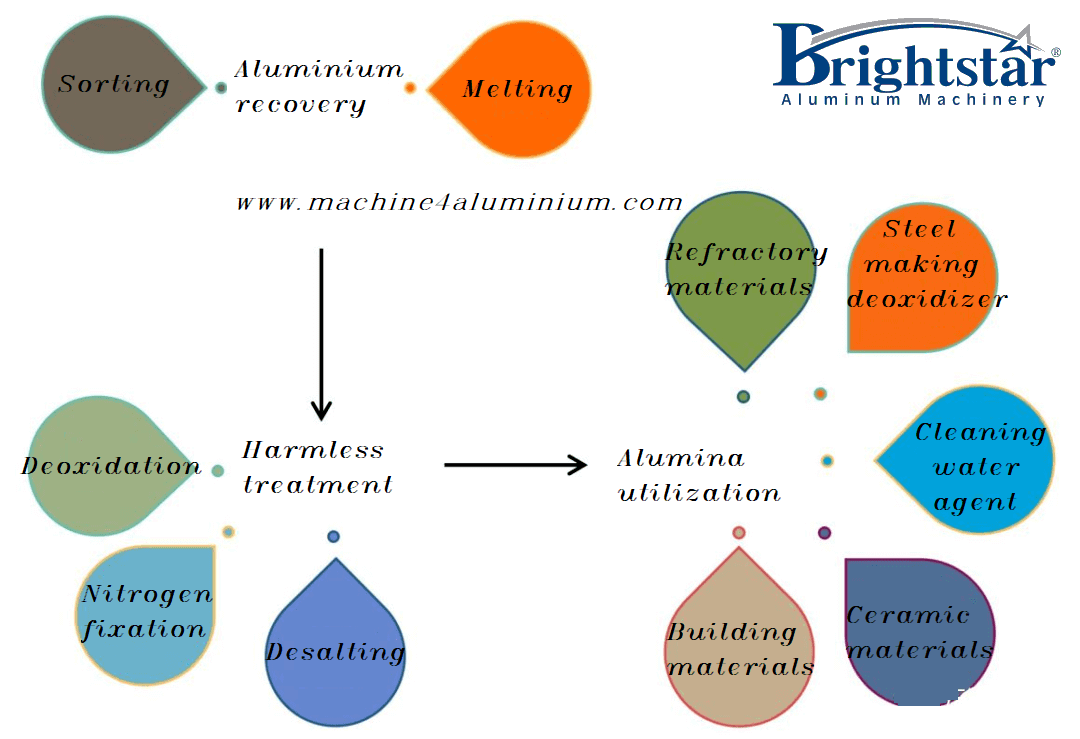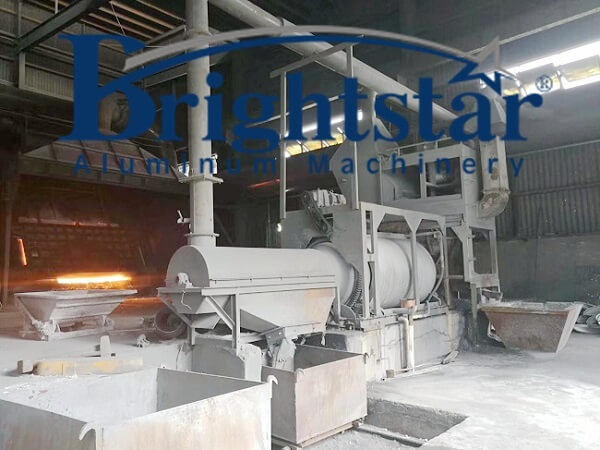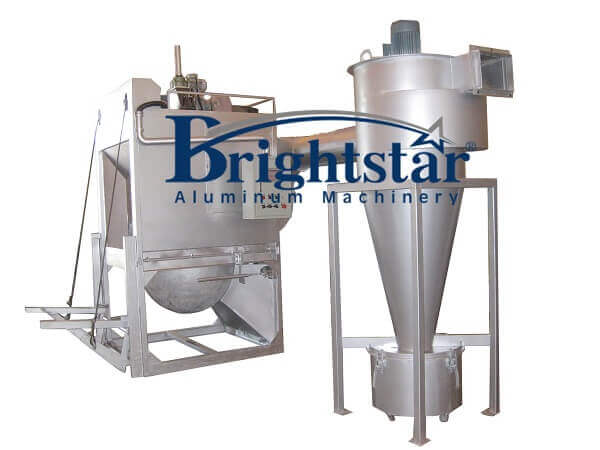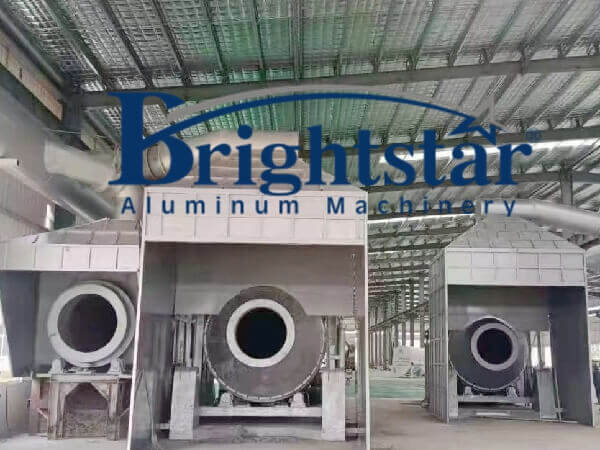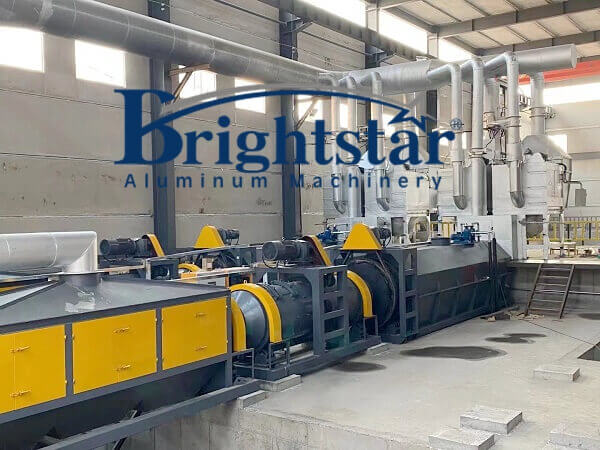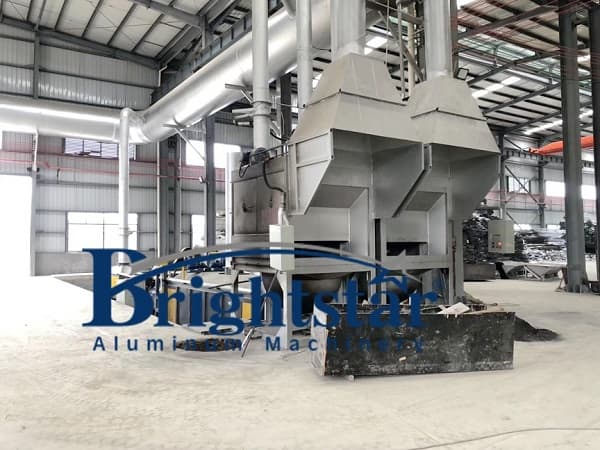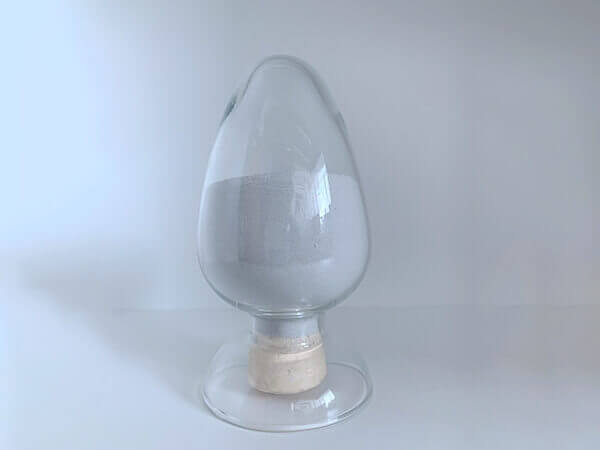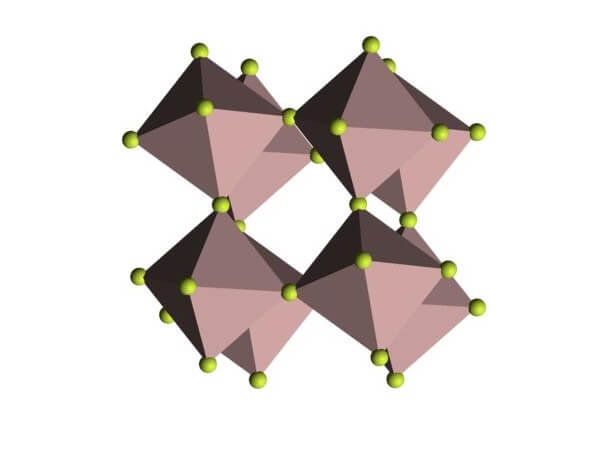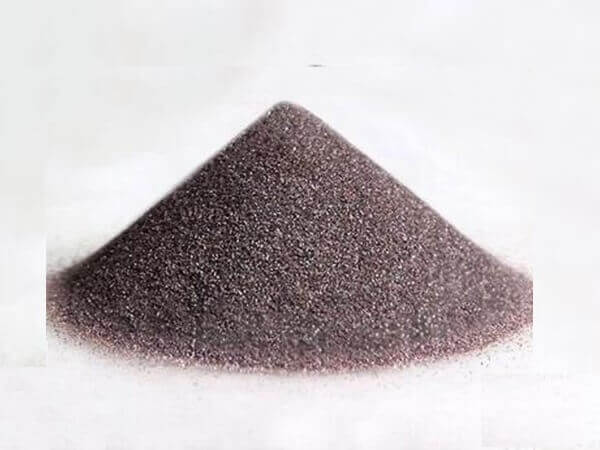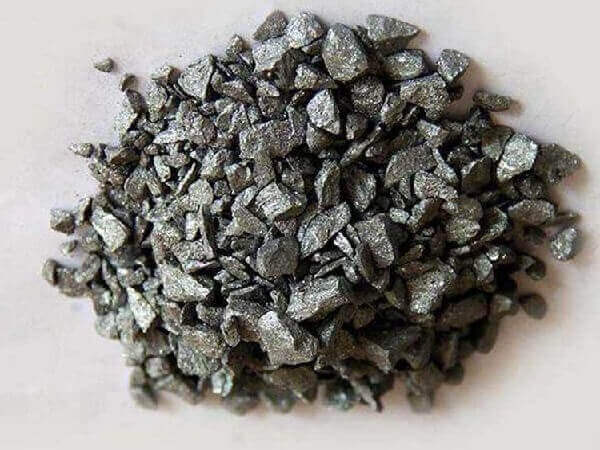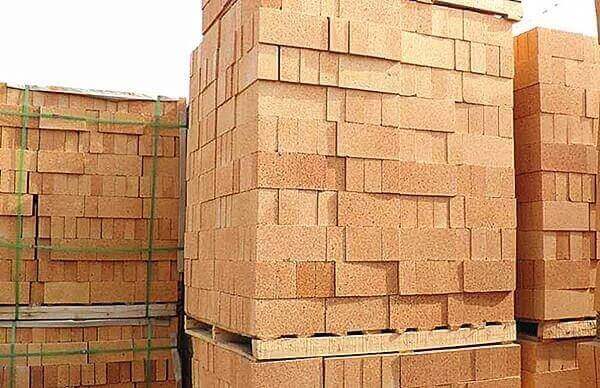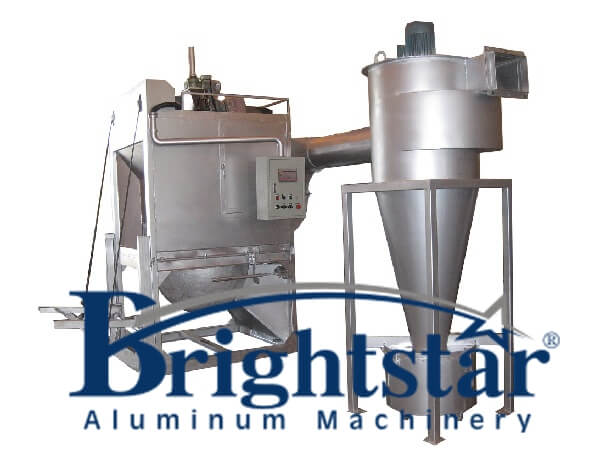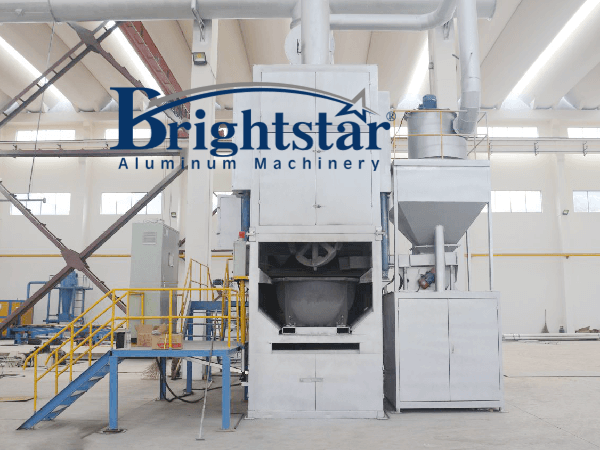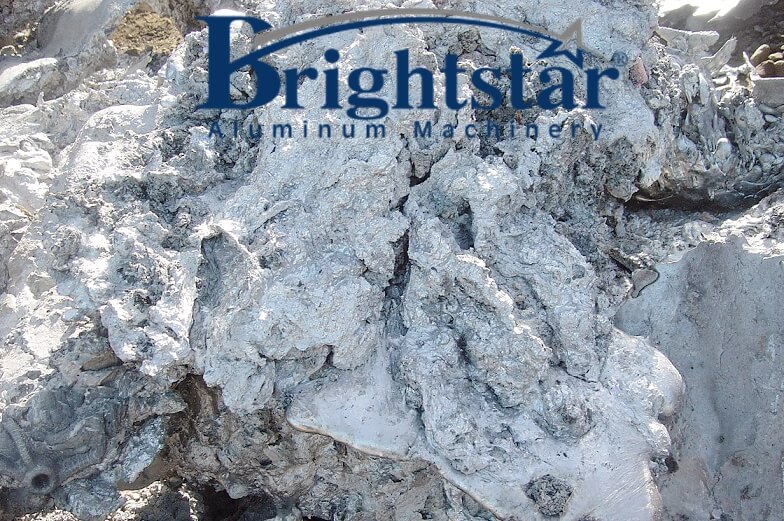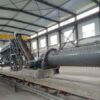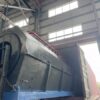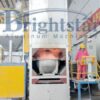
Aluminium dross processing
Aluminium dross processing
Introduction
This article is an investigation of the aluminium dross generation and its recovery solution.
You will read about:
What is aluminium dross?
Aluminium dross is the mixture of metallic aluminium and non-metal part mostly Aluminium oxide.
Dross is formed on the surface of molten Aluminum or its alloys by oxidation.
Dross is a valuable by-product of any Aluminium Smelter or Aluminium Foundry.
Dross is recycled to recover the valuable Aluminium Metal worldwide.
Dross is not a waste but a valuable by-product of the smelter.
Aluminum dross is a mass of solid impurities floating on molten metal. As aluminum metal melting point is 660℃, which is low-melting-point, so it will be formed on the surface in aluminum melting or alloys by oxidation of the aluminum.
Approximately “millions of tons of aluminum dross is produced per year in the world.”
There are two primary types of aluminum dross: black and white.
Black dross, also known as dry dross, has a granular texture.
It tends to have a low metal content and a high concentration of salts and oxides.
White dross, which is wet, has high concentrations of metal and a smaller amount of salts and oxides.
Dross handling at the smelter is of utmost importance.
Here are five identification methods
1. Aluminium dross generated source, which means melting furnace type, such as the reverberatory furnace, rotary furnace;
2. Salt compounds content in aluminium dross, how much and what kind of salt compound flux;
3. Aluminium content in the aluminium dross, how much aluminium content in the dross before aluminum dross processing;
4. Shapes of aluminium dross, what are the dimensions and shapes of aluminum dross? For example, the chunk of aluminum dross or a thin piece of aluminum dross, aluminum slagging or block aluminum dross.
5. According to melting furnace materials and melting process differences, there will be different aluminium dross or aluminium slag. We call them black dross or white dross in the color.
Sources and types of aluminum dross
Aluminum dross is generated in all the processes of molten aluminum, mainly including primary aluminum production (electrolytic aluminum), aluminum alloy production, scrap aluminum recycling and aluminum dross treatment process.
Generally, according to the different metal aluminum content in aluminum dross, it can be divided into primary aluminum dross and secondary aluminum dross.
The aluminum dross skimming from the smelting furnace is called primary aluminum dross, which is gray-white in appearance, mainly composed of a mixture of metallic aluminum and aluminum oxide, and the aluminum content can reach 15%~ 70%, also known as “white aluminum dross”; secondary aluminum dross is the waste after the primary aluminum dross is extracted from metal aluminum.
The main component is aluminum oxide, aluminum nitride, metal aluminum, salts and other components.
It is consolidated into lumps, also called “salt cake”.
| Composition | Aluminum | Alumina | Aluminum Nitride | Aluminum Chloride | Aluminum Fluoride | Silicon
Oxide |
Other |
| Primary aluminum dross(%) |
20~60 | 25~30 | 9~15 | 1.2~3 | 0.6~2.5 | 3~8 | 4.5~12 |
| Secondary aluminum dross(%) |
2~5 | 40~50 | 15~25 | 2~5 | 1~4 | 5~12 | 8~20 |
Aluminum dross properties
The composition of aluminum dross has obvious differences due to the different production procedures and processes.
The main part is alumina, metallic aluminum, magnesia-aluminum spinel, periclase, quartz, aluminum nitride, aluminum carbide and salt solvents, etc.
The bulk density of aluminum dross is 0.828~1.118g/cm3, the apparent density is 2.396~2.528 g/cm3, and the PH of the leaching solution is 9.03~10.14.
Aluminium dross generation and percentage
The reason why aluminum dross is produced in such high quantities in the world is that aluminum is a material commonly utilized in the production of a number of products including “pistons, engine and body parts for cars, beverage cans, doors, siding and aluminum foil.
Typical dross generation from a primary operation can be from 0.8% to 1.3% of Aluminium output.
From the secondary smelters, it can reach up to 10%.
How to minimize aluminium dross in melting
How to minimize dross generation? It is a big issue for the primary and secondary aluminum industry
Dross generation is inevitable in the melting, but we can take some measures to minimize dross generation so that we can improve the metal yield rate and metal quality
1. Get a reasonable furnace shape
Make the molten pool area as small as possible, speed up the heating time, such as, increasing heating strength or using oxygen enrichment for reverberatory or electric furnace adopt high power transmission, or use an electromagnetic stirrer for the stirring in the bottom of the melting furnace, all can shorten the melting time, reduce oxidation loss.
Adopting a round flame furnace and top fast charging technology aluminum melting furnace, can shorten charging time and melting time, and reduce energy consumption and oxidation loss and dross generation.
2. Control the furnace temperature reasonably
In the condition of keeping the metal melts flowability and refining process requirement, the temperature cannot be too high.
Before furnace charging melts, we need to make high-temperature quick heating and melting, after it, we need to regulate the control of the furnace temperature, don’t make the melts too hot.
3. Control the furnace gas properly
When melting aluminium and aluminium alloy that is easily oxidized and hydrogen pickup, should choose micro oxidation gas.
4. Charging and operating properly
Sorted and cleaned aluminum scraps, and baled the crushed charge with the baling press.
Put the furnace charging that is easily oxidized into the bottom layer in the furnace, or put it later after the other furnace charging melted, or put them in as master alloy.
5. Use covering agent and surface active element
Drop flux on the surface of furnace charge, which can reduce oxidation loss.
Appropriate flux amount and refining time, stirring should be stable, without destroying the oxide film on the surface of the melt, and covering the aluminum melt in time
6. Process before skimming
The slag floating on the surface of the melt after smelting has good wettability with the melt, and a considerable amount of met is mixed in the slag.
This part of the melt is dispersed in the slag in the form of particles and adheres to the slag together.
If the dross is skimmed at this time, the weight of the melt carried out with the slag is about 60% of the weight of the slag.
The slagging agent with a slag content of 1‰ to 2‰ on the surface of the melt to reduce the aluminum content in the slag.
The reaction between the slagging agent and the molten aluminum is as follows:
Na2SiF6→2NaF SiF4 2NaF Al2O3→NaAlO2 NaAlOF2 4NaF 2Al2O3→3NaAlO2 NaAlF4 6NaF Al2O3→2AlF3 3Na2O
The reactant AlF3 reacts exothermically with aluminum and oxygen, and the heat released makes the viscous slag It become loose powdery dry slag.
In this way, the wettability of the aluminum melt and the oxides in the slag become smaller, so that the granular aluminum droplets mixed in the slag are detached and returned to the melt.
7. Process after skimming
It should be pointed out that the dross removed after the above treatment is still mixed with aluminum droplets, then we will use aluminum dross processing machine to extract 90% aluminum from the dross.
The dross after secondary treatment contains only a small amount of aluminum particles.
The dross cooling machine and ball mill and sieving machine can be applied for recycling.
The impact of aluminum dross on the environment
The level of aluminum dross treatment and resource utilization is relatively backward, and most companies adopt direct landfill or stacking methods.
This extensive treatment method will cause the following three hazards to the environment.
Impact of aluminium dross on the environment
What are the harmful elements in aluminum dross?
Nitrogen (N): mainly exists in the form of AlN, ammonia gas will be produced when it meets water;
(AlN+H2O=Al2O3+NH3↑)
Fluorine (F-): mainly exists as fluoride, and releases fluoride ions when it meets water;
Na3AlF6, Na2SiF6, AlF3, NaF, MgF2
Chlorine (Cl): mainly exists as chloride salt, which is harmful to equipment corrosion and products;
Zinc (Zn) Lead (Pb) Arsenic (As) Mercury (Hg) Copper (Cu) Chromium (Cr)
Groundwater pollution
Aluminum dross is affected by rain or a humid environment during the storage process, and the toxic and harmful substances such as fluoride, cyanide, heavy metals, soluble salt, etc. will migrate and transform, causing underground pollution.
In addition, the aluminum nitride of aluminum dross in the damp environment will release ammonia gas, causing the pH of the groundwater to rise; some calcium and magnesium ions may also cause the total hardness of the groundwater to exceed the standard.
Air pollution
The aluminum nitride, metallic aluminum, and a small amount of aluminum carbide, aluminum sulfide, aluminum phosphide, etc. contained in aluminum dross will release a large amount of ammonia gas and produce a certain amount of hydrogen, methane, hydrogen sulfide, phosphine, etc.
Most of these gases are toxic and harmful, and some are foul-smelling, flammable and explosive.
Directly discharged into the air not only pollutes the atmosphere but also brings safety hazards.
In addition, the aluminum ash of the storage yard is exposed to the wind and sun.
The surface adhesion of aluminum dust becomes poor, which can easily cause dust pollution.
Soil pollution
The accumulation of aluminum dross not only occupies a large amount of arable land, but also its salt will slowly accumulate in the soil, causing salinization, and disturbing the normal physiological activities of the roots of the surrounding plants.
In addition, the selenium, arsenic, barium, barrier, chromium, lead, etc. in the aluminum dross may be possible Lead to excessive soil heavy metals.
Aluminium dross recovery necessity
In aluminum scraps recycling and primary and secondary aluminum industry, more than millions of tons aluminium dross are generated from the furnaces each year, which contains a large amount of aluminum in the dross, If we sell them with simple dross processing, that will cause a big waste and also it pollutes the environment.
But if we use the rotary furnace, grinding separation by cold dross, pressing and manpower dross processing, these methods are not only a low recovery rate but also a big waste and it is harmful to the environment.
So it is particularly important to maximize the recovery of aluminum from the aluminum dross and slag, down Stream handling of the waste is very important in selecting the dross processing process.
Today, rising pollution, too much energy loss and natural resource waste have raised a red flag that no industry can afford to overlook.
The stakes are way too high and ignoring the effects can cost the industry its very existence.
Many Brightstar customers started considering aluminium dross recycling primarily keeping these sustainability issues in mind.
Extracting aluminum from aluminum dross through an aluminum dross recovery machine has huge social and economic benefits, which can not only improve the aluminum recovery rate, and increase the profit, but also reduce smoke and gas pollution, and reduce the work strength.
In the current overview of systems and technologies for the treatment of aluminum dross removed from the aluminum melting furnaces and holding furnaces, the aluminum dross recovery machine is by far the most widespread technology which ensures the best economic results, as well as environmental and operational benefits.
Aluminium dross recovery situation
There will be lots of aluminum dross in the melting process, which (residue) contains a large amount of aluminum with the residue removal from the furnace.
If we sell them with simple processing, that will cause great waste and also it pollutes the environment.
But if we use a rotary furnace, grinding separation by cold ash, pressing and labor dross processing and these methods are not only a low recovery rate, but also a big waste and harmful to the environment.
So it is particularly important to maximize the recovery of aluminum from aluminum dross.
There will be lots of aluminum dross in the melting process, which (residue) contains large amount of aluminum with the residue removal from the furnace.
If we sell them with simple processing, that will cause a great waste and also it pollutes the environment.
But if we use a rotary furnace, grinding separation by cold dross, pressing and labor dross processing, these methods are not only low recovery rate, but also a big waste and harmful to the environment and workers.
So it is particularly important to maximize the recovery of aluminum from aluminium dross.
The situation of aluminum dross processing system in the past
1. Low recovery rate
Most aluminum factories add a separating agent into the melting furnace and skim aluminum ashes, stirring the aluminum dross with a pricker, recovering the aluminum from the dross as the molten aluminum flow down the ground and get solidified.
The rest aluminum will be sold to an aluminum dross processing company with the aluminum dross. The recovered aluminum that flow down the ground can only share 10% of the total aluminum dross.
2. Terrible environmental pollution
The aluminum dross processing company uses a hammer to break into pieces, a pricker for the stirring, sieve for the sieving by labor to recover the aluminum from the dross furthest, which causes a lot of dust and pollutes the environment seriously.
3. Heavy working strength, harmful to the health
The workers need to stir the dross with the pricker and move the dross trolley by labor after the skimming. It is heavy working strength and in the high-temperature liquid aluminum and aluminum dross situation, it is easy to get hurt in the operation.
4. High energy consumption
In order to recover aluminum from the aluminum dross in hot conditions, many factories use a crucible melting furnace to heat the aluminum dross, stir the dross after they add a separating agent, then get the aluminum from the dross. The heating process will consume some energy and labor.
Valuable element recovery technology of aluminium dross
Recover Aluminium from aluminium dross
Aluminum dross, especially the primary aluminum dross contains too much metal aluminum.
Many technologies have been developed at home and abroad to recover the metal aluminum from aluminum dross.
Mainly divided into two types: heat treatment and cold treatment.
Common aluminum dross heat recovery technologies include: DPM(dross processing machine) recovery method, tilting rotary furnace treatment method, Squeezing recovery method and MRM(metal recycling machine)method, etc.
This type of technology is mainly applied to primary aluminum dross, which can make full use of the physical residual heat of aluminum dross, extract aluminium from aluminium dross on site.
Common aluminum dross cold treatment technologies include Gravity concentration, electrical concentration, mechanical crushing and screening method, etc. T
his type of technology is mainly used for secondary aluminum dross recovery, with simple operation less pollution features.
Recover alumina from aluminium dross
The main methods for recovering alumina from aluminum dross include acid method, alkali smelting method, alkaline leaching method, etc.
DAS uses sulfuric acid leaching method to recover η-Al2O3 from aluminum dross, first through water washing the soluble salt in the aluminum dross is removed, and then leached with sulfuric acid to obtain aluminum sulfate solution, which is reacted with ammonia water, and finally, η-Al2O3 is prepared by calcination. The recovery rate of aluminum in this process reaches 84%.
MOSTAFA uses hydrochloric acid The leaching method prepares nano-grade high-purity alumina γ-Al2O3, leaches for 2h at a hydrochloric acid concentration of 5mol/L and a reaction temperature of 85 ℃, and prepares alumina with a particle size of 15.90nm, and the purity of the product is above 98%; the study also found that aluminum dissolution of dross in hydrochloric acid is controlled by layer diffusion, and the reaction activation energy is 10.49kJ/mol.
Fei Li uses a low-temperature alkaline smelting-leaching-seed decomposition process to prepare α-Al2O3.
Yangmin Zhou smelted the purified aluminum dross with caustic soda to prepare sodium aluminate, and then prepared sandy alumina through water immersion, separation, and calcination.
Gang Xie adopts pressurized alkaline leaching and microwave-assisted activation to realize electrolytic aluminum Recovery of alumina from aluminium dross.
Recover salt from aluminium dross
The salt in the aluminum dross is mainly derived from the flux added in the process of recovering aluminum by the heat treatment method.
Wei Cui uses ultrasonic enhanced leaching to recover the chloride salt in the aluminum dross, which increases the leaching rate and shortens the leaching time compared with conventional leaching.
BRUCKARD studied the influence of different aluminum dross particle sizes, leaching time, leaching temperature, and type of leaching solution on the soluble salt was studied, and it was shown that more than 90% of the chloride can be eluted by water within 1 hour Under the wet milling-alkali leaching process conditions, the chlorine removal rate is as high as 99.6%.
The recovery of soluble salts in the aluminum dross is generally not carried out separately and is usually an additional process for the recycling of aluminum dross.
Recover gases from aluminium dross
Aluminum dross can produce hydrogen, ammonia, methane, hydrogen sulfide and other gases.
Each kilogram of aluminum dross can release 0.25~1.17L of gas. Although the amount of gas is small, and its economic effect has been questioned, in recent years, experts and scholars at home and abroad began to pay attention to the research on the overall resource utilization of aluminum dross.
As a product of resource utilization, gas became a potential source of various gases.
MESHRAM and others studied the use of sodium hydroxide solution to recover aluminum dross. Hydrogen technology, the results show that fine-particle aluminum dross is easier to generate hydrogen because it has a larger surface area, although the content of metallic aluminum in fine-particle aluminum dross is lower than that of coarse particles.
DAVID research shows that the aluminum dross is crushed and ground to 45μm, and the aluminum oxide film covered the metal aluminum is destroyed, and sodium hydroxide and potassium hydroxide are used as catalysts. At room temperature, the recovery rate of hydrogen can reach 100%.
BRUCKARD found that ammonia is easier to produce in alkaline solutions with pH>8, and it is mainly in the form of ammonia in solutions with pH<8.
Aluminium dross recovery method
Aluminum dross is a valuable by-product generated in the aluminum smelting process of any aluminium smelter or aluminium foundry.
Aluminum dross is not a waste but a valuable by-product of the smelter.
The amount of aluminum dross generated in the melting is a big quantity each year for some big smelters.
The storing of this aluminum dross in the factory area not only causes resource waste but also causes environmental pollution.
Therefore, the research on the comprehensive utilization technology of aluminum dross has a great economic and social benefit.
Aluminium dross hot and cold treatment recovery method
At present, there are many methods for recovering aluminum from aluminum dross, which can be roughly divided into two classifications: heat treatment recovery method and cold treatment recovery method. The aluminum recovery rate in these methods can reach more than 80%.
The heat treatment recovery method is mainly aimed at primary aluminum dross (white dross), which is a mixture of aluminum oxide and aluminum metal with a metal content varying from 15 to 80%. The aluminum content of this dross is usually from 15- 80%.
The cold treatment recovery method is mainly for secondary aluminum dross.
The aluminum dross treated by the heat treatment recovery method still contains a certain amount of aluminum, and the cooled metallic aluminum forms small particles, the aluminum content varies from 7 to 35% and in special circumstances as high as 50%.
The main methods of recovering aluminum from aluminum dross are heat treatment recovery method and cold treatment recovery method, and the recovery rate of aluminum can reach more than 50%.
The most effective method for extraction aluminium from hot dross, skimming aluminium dross from the furnaces, mechanical stirring with the machine rotor, make full use of residual heating for aluminium dross, no need any fuel and no need any chemical flux in the operation. Little machine, big performance.
The investment can be taken back within 1-3 months if the dross processing quantity is enough.
ALUREC Method
The ALUREC method is jointly developed by AGA AB Gas Technology Group, Hoogovens Aluminum, and MAN GHH.
The rotary melting furnace is quickly heated to a high temperature by oxygen-enriched natural gas, melting aluminum at the bottom of the rotary melting furnace, and slag floating on the molten aluminum.
This method has high efficiency, low energy consumption and good operating environment, but it has high production cost and large amount of smoke and dust in the dust collection system.
Tilting Rotary Furnace Treatment Method
The tilting rotary furnace process is to add a small amount of salt flux or no flux to the tilting rotary furnace to melt aluminum. The aluminum dross and molten salt (NaCl, KCl, CaF mixture) are mixed in the rotary furnace, and heated at high temperature while rotating so that the metal aluminum melts and sinks to the bottom of the furnace to achieve the separation.
The method is simple to operate and easy to implement, but it requires fuel heating, equipment lining material loss, the equipment failure rate is high and a small production scale.
MRM (Metal Recycling machine) and modified MRM method
The process is to send the hot aluminum dross generated from the furnace into the dross machine with the stirring device, add the heating flux, and maintain a certain temperature so that the metal aluminum is melted and separated from the bottom outlet.
The remaining aluminum dross can be crushed, sieved, and melted to recycle metal aluminum.
The improved MRM method is to introduce argon gas for stirring and aluminum recovery.
The aluminum burning loss rate of this method is less than 4%, and the recovery rate is more than 91%. It has the advantages of fast processing speed, low aluminum burning loss and high recovery rate.
Plasma Instant Method
The plasma instant method uses a plasma nozzle that operates on an electric current to melt aluminum dross in a tilting furnace. Stir in carbon dioxide, carbon tetrahydrogen or hydrogen in the air in an appropriate amount.
When the material is rapidly heated to 950°C, and the metal aluminum sinks and is discharged at the bottom of the furnace.
The total recovery rate of aluminum is 90%. Because calcium oxide is added as a flux, a by-product calcium aluminate is produced.
This method has a high recovery rate of metal aluminum, does not use salt flux, but consumes gases such as CO 2, CH 4 or H 2, and the supply and auxiliary equipment is complicated, and there are problems in the production and sales of by-product calcium aluminate.
Squeezing Recovery Method
In this method, hot aluminum dross is added from the upper part of the machine, and the molten aluminum is squeezed by applying static pressure or dynamic pressure.
This method has the advantages of simple equipment, low maintenance cost, but the recovery rate is low and it is a big investment.
Gravity Concentration
The main equipment of gravity beneficiation treatment of aluminum dross is a table concentrator.
This method has been widely used in the sorting of precious metal ores such as tungsten, tin and gold.
The principle is to use the density of metal and gangue particles, it is separated in an environment where water is the main medium.
This method is more suitable for processing aluminum dross after heat treatment recovery method (which can be called secondary aluminum dross).
Electrical concentration
The principle of electrical separation is a beneficiation method that utilizes the different electrical properties of various materials.
The electric separation equipment has a rotating drum with good grounding. At the same time, there is a high-voltage DC electrode near the rotating drum. This electrode generates a electric field against the rotating drum.
There is a hopper at the top of the rotating drum. Aluminium dross continues to fall on the surface of the drum and enter the corona field. At this time, all the components in the aluminum dross are charged, and the electrical properties of aluminum are different from other substances.
The charge obtained by the aluminum particles is immediately transferred to the ground by the drum and lost. After the charge, under the action of the centrifugal force and gravity of the drum, the aluminum particles fall, but the non-conductor has a charge, is adsorbed on the drum, is taken to the other end, and then passed through the brush, the falling point of the two is obviously different, so that, aluminum and non-aluminum substances in aluminum dross can be effectively separated.
Crushing and Screening method
After cooling, the heat-treated aluminum dross processed by aluminum dross machine will be ground and crushed by the ball mill.
During ball milling, aluminum metal and other components in the dross will be separated and reach different particle sizes that are suitable for recycling, through the impact, grinding and crushing of the ball mill medium. Aluminum dross will be screened in different grades for recovery.
Aluminium dross processing machine, dross cooling machine and ball mill and sieving machine, the completed solution for the dross recycling.
Hot aluminium dross processing methods
Top 3 methods for hot aluminium dross processing
Aluminum dross is one kind of by-product of aluminum industry, aluminum content from that will share 1%-12% of the total loss in the aluminum production process.
Recovery of aluminum from aluminum dross can reduce the cost, protect the environment, save energy and improve resource utilization, which has big economic and social benefits.
MRM method (Metal recycling machine)
It is also called an aluminium dross machine(ADM), this process is sending hot aluminum dross generated from the melting furnace to the machine with the dross trolley, making the liquid aluminum stirring in the pot of aluminium dross machine, mechanical fully stirring, then aluminum will be extracted from the dross.
The processed aluminum dross can be further sieved, pulverized, melted and recovered for the second recovery processing.
The recovery rate can be 91% and the burning rate of aluminum can be reduced to 4%.
Our aluminum machine belongs to this type of dross machine and it has a high recovery rate, no need for any fuel, and a short working time, processing 100-600 kgs aluminium dross in 10-12 minutes.
The pressing recovery process method
Press 15Mpa pressure on it, and the liquid metal of dross will flow down to the lower container under the pressure; the oxidation of slag that is pressed will be ended, and the oxide will be muffled in the metal shell.
At the same time, the metal shell of the dross will transfer the heat to the pressure head and slag tray, the cooling water of the pressure head will take away lots of heating, which will make the dross temperature reduced from more than 800℃ to below 450℃, to prevent the oxidation of metal because of high temperature.
ALUREC Method
Rotary aluminum melting furnace, Oxygenenrichment natural gas as the fuel, can get to high temperature in a short time.
Liquid aluminum lay down the bottom of the melting furnace; Non-metallic slag will float on the top of the melting furnace.
The method is featured with high efficiency, low energy consumption, good running environment.
Pure oxygen will be used as an oxidizer effective to reduce the organic gases generated in the combustion process.
Gas hoods can effectively recover the other dust, with high efficiency, high degree of mechanization and good running environment advantages.
The shortage is the residual aluminum dross that needs to be further processed.
Production of aluminum compounds from aluminum dross
The secondary aluminum dross stored and urgently needed to be processed by the enterprise is the secondary aluminum dross.
The main component of the aluminum dross is aluminum oxide.
At present, many comprehensive utilization methods of aluminum dross have been developed at home and abroad for the recovery of aluminum dross.
Production of high polymer cryolite from aluminum dross
Nanyang Dongfang Chemical Research uses aluminum dross as the source of aluminum, Use acid solution or alkali solution process to separate aluminum from aluminum dross and prepare sodium aluminate, and then use sodium aluminate and sodium fluorosilicate as raw materials to produce high polymer cryolite under optimized process conditions the aluminum dissolution rate reaches 98.6%, and the yield rate reaches 95.3%. The cryolite produced meets the GB/T 4291-2017 standard.
The production process effectively controls and comprehensively utilizes wastewater and waste gas, and has no impact on the environment.
Production of aluminum fluoride from aluminum dross
Some Chinese Engineers studied the process of preparing aluminum fluoride from electrolytic aluminum dross and made an industrialization attempt. Using fluorosilicic acid, a by-product of the phosphorus chemical industry, as the fluorine source, the fluorosilicic acid is reacted with ammonia, and the fluorinating agent solution and precipitated Silica is obtained after separation.
After the fluorinating agent solution is concentrated, crystallized and vaporized, it is sent to an aluminum fluoride reactor and reacted with aluminum hydroxide to obtain anhydrous aluminum fluoride.
The aluminum hydroxide used is made of electrolytic aluminum dross.
The mother liquor produced in the production of aluminum hydroxide is an ammonium sulfate solution, which is sent to the mother liquor for comprehensive utilization for the recovery of ammonia, and the obtained ammonia is recycled for use.
Under optimized process conditions, the aluminum leaching rate is ≥95%, and the yield rate is ≥88%.
The products obtained meet the GB/T 4292-2017 standard, and have the advantages of low production cost, excellent product quality, and pollution-free production process.
Synthetic polyaluminum chloride
Some Chinese Engineers proposed that aluminum dross and hydrochloric acid were used as raw materials to prepare liquid polyaluminum chloride by acid dissolution.
The aluminum dross is pretreated by washing with water to remove water-soluble salts, and the obtained aluminum dross content is 30%. Add the hydrochloric acid solution to the reaction still and heat to a certain temperature, add aluminum dross and stir constantly, control the reaction temperature to 96 ℃, the reaction time is 6 to 12 h, after the reaction is completed, add water to dilute, and the pH is controlled at 3.5 to 4. 5. Precipitation for 15-24 h to obtain liquid polyaluminum chloride.
The process has the characteristics of fast reaction speed and simple process, but the hydrochloric acid corrodes the equipment and the subsequent waste liquid treatment cost is high.
Production of aluminum sulfate
Some Chinese Engineers have conducted research on the production of aluminum sulfate using aluminum dross as raw material.
Under the optimal process conditions, the aluminum recovery rate is over 93%, and the quality of aluminum sulfate fully reaches the first-level standard of HG2225-91.
Synthesis the alumina for ink
Some Chinese engineers used the preparation of liquid aluminum sulfate, the preparation of sodium metaaluminate, and the synthesis of alumina to oxidize the aluminum-containing waste sulfuric acid in the waste bath discharged from the aluminum profile anodization process and the secondary aluminum dross synthesis alumina for ink.
All indicators of alumina products for inks produced by this method meet national standards.
Other products made from aluminium dross
Ceramic simple brick production
Some Chinese engineers added appropriate amounts of clay, quartz and additives to the aluminum dross (to reduce the firing temperature), pressed and formed and fired to prepare high-performance ceramic simple bricks.
The aluminum dross content of ceramic brick is ≥60%, the porosity of the broken body is 30%-50%, the flexural strength>20MPa, and the compressive strength>60 MPa.
It is a ganged brick with excellent performance. This method opens up a new way of recycling aluminum dross and reduces the raw material cost of ganged bricks.
Synthetic Sialon powder from aluminum dross and coal ash
Some Chinese engineers got Sialon powder using a carbothermal-aluminum-thermal composite reductive nitriding process, with aluminum dross, carbon black and coal ash as the main raw materials.
Through experimental research, it is concluded that when the ratio of silicon to aluminum in the raw material is 1.5, relatively pure Sialon powder can be got at 1450°C. Sialon materials have superior chemical stability, mechanical properties, and thermal properties.
This method uses industrial hazardous waste residues, protects the environment, and reduces the synthesis cost of Sialon ceramics, but the cost is high and it is difficult to promote and apply it.
Sintered materials production
Using aluminum dross produced by secondary aluminum alloy manufacturers, some companies jointly developed a technology for producing sintered materials.
A material with high strength, internal porous, light and water-permeable is obtained.
It is widely used and can be used as agricultural materials, subsea purification materials and lightweight aggregates for construction.
The material is water-permeable, which shortens the construction time and meets the requirements of barrier-free.
Production of brown aluminium oxide
Some Chinese companies used pretreated aluminum dross as raw material, anthracite as a reducing agent, and iron filings as a precipitant to produce brown fused alumina.
The product index of brown fused alumina produced by this process has reached the secondary product index (88% alumina), part of which the product meets the national standard of GB1478-81 (Al2O3 ≥92. 5%, TiO2 1. 5%~3.8%).
Production of adsorbent
Gupta VK et al. conducted a study on this. When the wastewater containing phenol was passed at 0.5 mL/min in a cylindrical adsorption device equipped with an adsorbent, the removal rate of phenol reached 98%, and the adsorbent effect was obvious.
Genc. Fuhrman H and others have also studied this, controlling the pH value, the active red mud adsorbent has a good effect on absorbing arsenate ions in the water, and the adsorption rate is 100%.
Using hazardous waste aluminum dross to produce adsorbent instead of activated carbon is a good choice, and the adsorption effect is good
Refining agent for steelmaking
PICKENS invented a process for preparing calcium aluminate from aluminum dross. First, the aluminum dross is crushed and ground, and the soluble and insoluble materials in the aluminum dross are separated by water leaching, and the salt is recovered from the soluble matter.
The main composition of the insoluble matter is alumina and a small amount of magnesium and silicon oxide, basically do not contain aluminum nitride and metallic aluminum.
Add a certain amount of calcium oxide to insoluble matter, and fired into calcium aluminate at 1 093-1193°C, which can be used to remove the harmful element sulfur in a high-quality steel.
Wanchao Liu and others also reported on the process of preparing calcium aluminate refining agent from aluminum dross.
China is a big country in iron and steel, and the use of aluminum dross to make steel-making flux is expected to realize the large-scale application of aluminum dross.
Refractory materials production
Refractory materials are widely used in high temperature industries such as metallurgy, cement, ceramics, glass, petrochemicals, etc. Aluminum dross contains a large amount of alumina, making it a potential raw material for refractory production.
PARK uses aluminum dross calcined at 900°C to replace part of the castable fine aggregate (<0.074mm). Generally, its compressive and flexural strength can meet the requirements, but when the content exceeds 30%, its performance decreases.
YOSHIMURA uses plasma heating technology to prepare refractory materials. Aluminum dross does not require pretreatment and can directly replace about 5% of raw materials, but it is necessary to strictly control the moisture content in the production process to prevent cracks caused by gas generation at high temperatures.
Xiaona Li using aluminum dross, high-alumina bauxite and fused magnesia as raw materials, high-temperature fusion method is used to synthesize aluminum-rich magnesium-aluminum spinel, and it is verified that it is feasible as a refractory raw material.
Aluminium dross processing machine
Brightstar develops a new hot aluminium dross processing machine with many experiences in melting, avoiding the disadvantages of old processing ways, with the shortest processing time to get maximum profit.
DPM(dross processing machine) is a machine that extracts more than 90% aluminium from hot aluminium dross on site, which adopts foreign advanced technology, no need any fuel and no need any chemical flux in the operation,10-12 minutes of mechanical stirring, high recovery rate, automatic and simple operation, make full use of the aluminum dross and replace the old way of recycling by labor.
The whole machine is fully automatic in the mechanical working way and its efficiency is increased by 15% compared with the manual way.
Aluminum melting principle
Aluminum melting point is 660℃ light alloy.
When the temperature of aluminum gets more than 660℃, all aluminum will become liquid aluminum and can be separated from the dross and slag.
Working principle:
The dross processing machine is designed on the basis of the difference in physical property and a specific gravity between solid materials and liquid materials.
Advantages:
* Recover aluminum from the dross on the site, economical and environment-friendly.
* No need for any fuel in the whole process
* To reduce the dirt, smog pollution problem with dirt and smoke ventilation equipment.
* Automatic mechanical operation, no harmful to the operator’s health.
* High efficiency for recycling rate (91% of aluminum from the slag), short working time
Equipment and machines
Aluminum dross processing machine and dust collector
The loading capacity can be 100 to 650kgs depending on aluminum dross processing machine models.
How to choose the right dross machine for your project
Getting aluminium dross machine right for your project, It is reported that the aluminium dross generated in aluminium industry is more than 6 million tons in the world, but only half can be processed to recover aluminium from aluminium dross.
In the past, the aluminium dross recovery method has the following disadvantages
*Low recovery rate
*Terrible environmental pollution
*Heavy working strength, harmful to the health
*High energy consumption
So, it is necessary to make some changes to aluminium dross recycling
How do you choose aluminium dross machine for your aluminium dross recycling?
Typically, Aluminium dross machines are considered for additional long just before the work begins on aluminium dross recycling projects.
Given the different processing ways of aluminium dross machines available in the market, making a selection of the most appropriate aluminium dross machine can be confusing.
Brightstar Aluminum Machinery offers a few tips on choosing the right aluminium dross machine for your dross recovery project, quick and fast.
If you can get the right aluminium dross machine, the processing cost and the recovery rate will be great, which can do the trick or go through the roof.
If getting the improper dross machine, will cause low production capacity and bad recovery rate, the worst is cannot use in production.
Choose the right machine for hot or cold aluminium dross
Hot dross, a major by-product of all processes involving molten aluminium, forms at the surface of the molten metal as the latter reacts with the furnace atmosphere.
In general, it is generated from the furnaces and can be recycled directly with an aluminium dross machine.
Cold dross, the product of hot dross after natural cooling or going through a cooling machine, some are processed before the cooling, extract the most aluminium from hot dross, and some are not processed before the cooling.
Aluminium dross machine will be different for hot dross or cold dross.
If you are not sure what kind of machine is necessary for your project, you can send us your idea, Brightstar Aluminum Machinery will provide professional suggestion for your project based on many years of practice and 136 successful projects.
Choose the right machine for processing quantity
As the dross processing quantity is different for the customers, the model of the dross processing machine will be different.
For 100 kgs to 1,000 kgs dross processing quantity per run, or 200kgs to 30,000kgs processing quantity per day, the project solution will be different.
The machines and the system will be different based on the different processing quantities.
Brightstar Aluminum Machinery offers a total solution for dross processing and dross cooling.
Choose the right machine for different request
Some customers need the automatic and high-efficiency integrated aluminium dross processing system, as the quantity of aluminium dross generated from the furnaces is considerable.
Some customers only need a simple and cost-effective aluminium dross machine, the quantity of aluminium dross generated from the pit furnace is small, and also they need to save cost.
Some customers need to heat aluminium dross in the operation and then extract aluminium from hot dross, so the rotary furnace with the burner is necessary for the request.
Some customers need to reclaim aluminium from hot dross, and then cool it in the operation. As they buy some cold aluminium dross from other suppliers, with their own aluminium dross, the ball mill and sieving machine will be set up separately with the hopper for secondary recycling.
For different requests, the equipment setting and its investment will be different.
Whether you are a startup or a large aluminium industry company, we have the right aluminium dross machine for you.
Talk to the specialist
Brightstar Aluminum Machinery offers a wide solution for aluminium dross processing and recycling.
The solution includes hot dross extraction, separating, recovery as well as dross cooling, crushing, grinding and sieving.
Consult with our technical team for recommendations and advice on the right dross processing operation for your aluminium project and see how to make a profit from them.
Hazardous waste of aluminum dross
According to the latest “National Hazardous Waste List (Revised Draft version):
1. Waste dross from repair and replacement of the cathode lining of the electrolytic cell during the aluminum electrolysis process (overhaul slag)
2. The floating dross generated on the surface of the melt during the process of electrolytic aluminum process melt transfer, purification and impurity removal
3.The floating dross (salt slag and aluminum dross) generated on the surface of the melt during the transfer, purification and impurity removal of aluminum scraps smelting
4.The salt slag and secondary aluminum dross are produced in the process of recovering metallic aluminum from aluminum dross and aluminum slag by the molten salt method
They are all hazardous wastes and should be processed by enterprises with a “Hazardous Waste Business License” for harmless treatment.
Thoughts on the cost changes brought about by the hazardous waste of aluminum dross:
Processing qualification issues
The overall hazardous waste treatment capacity is insufficient in the short term, and some hazardous waste may need to be stored.
If aluminum dross will be hazardous waste, the number and production capacity of enterprises with aluminum dross processing qualifications will inevitably be insufficient in the short term, and it will take time to increase production capacity.
Warehouse storage problem
Then there is only one method for the continuous production of aluminum dross, which is to establish a dedicated warehouse for storage.
The problems are as the following:
First, does the company have a place to expand the factory building? Large companies can still have this condition. How about small and medium-sized enterprises? Whether there will be warehouses dedicated to small businesses for the centralized storage of aluminum dross.
Second, even if there is such a warehouse, security and risk issues will also cause high costs.
Transportation problem
The companies with the qualifications for handling hazardous waste in some areas have insufficient production capacity, and short-term processing costs are at a premium risk.
Because the trans-regional transportation of hazardous waste requires the permission of the local environmental protection department, generally speaking, it is difficult for some regions to be willing to accept hazardous waste.
Therefore, it is relatively difficult to treat hazardous waste across provinces.
Locally qualified production capacity for handling hazardous waste is likely to be insufficient, causing the processing costs in some areas to be drove up.
Technical problem
The current technology for processing aluminum dross is still progressing.
Right now, Aluminium dross processing machine, dross cooling machine, ball mill and sieving system or integrated automatic aluminium dross processing system are the most popular technology for dross recovery.
We think the processing technology still has a lot of room for improvement and new processing technology development has a vacuum period, which will exacerbate the problem of short-term processing capacity shortages.
Cost problem
At present, most of the aluminum dross treatment method is to sell the dross to dross processing factories to produce aluminium ingots.
In other words, the current method for enterprises to deal with aluminum dross is to sell it out.
Once aluminium dross as hazardous waste, the aluminum factories need to spend extra money to deal with it, and the cost will increase more than a little bit.
Taking the current aluminum dross price of about 145.00USD/ton, taking the secondary aluminum industry as an example, each ton of secondary aluminum smelting will generate about 3%-10% aluminum dross, which is calculated based on an average of 6.5% aluminum dross production.
If the cost per ton of aluminum dross processing reaches 600.00USD/ton, the cost of recycled aluminum per ton will increase by 50.00USD/ton.
hazardous waste
According to the EPA, Simply defined, hazardous waste is waste with properties that make it dangerous or capable of having a harmful effect on human health or the environment.
Hazardous waste is generated from many sources, ranging from industrial manufacturing process wastes to batteries and may come in many forms, including liquids, solids gases, and sludges.
According to Wikipedia, Hazardous waste is waste that has substantial or potential threats to public health or the environment.
According to the “Law of the People’s Republic of China on the Prevention and Control of Environmental Pollution by Solid Wastes”, hazardous wastes refer to solid wastes with hazardous characteristics that are included in the national hazardous waste list or identified in accordance with the hazardous waste identification standards and identification methods prescribed by the state.
Obviously, once aluminum dross is included in the “National Hazardous Waste List”, it is classified as hazardous waste.
Transportation of hazardous waste:
According to the latest “Administrative Measures for the Safety of Road Transportation of Dangerous Goods”, “the shipper shall provide the carrier with electronic or paper form of hazardous waste transferring issued by the competent department of the ecological environment when consigning hazardous waste (including medical waste, the same below).”
Hazardous waste transfer form:
According to the “Measures for the Management of Hazardous Waste Transfer Forms”, the five forms of hazardous waste transfer usually refer to the five forms of hazardous solid waste transfer, involving hazardous waste producing units, receiving units, transportation units, competent authorities, etc, this form must be filed in 5 units.
Hazardous waste treatment:
All units engaged in the collection, storage, and disposal of hazardous waste within the territory of our country shall receive them in accordance with the relevant provisions of the “Law of the People’s Republic of China on the Prevention and Control of Environmental Pollution by Solid Waste” and the “Administrative Measures for Hazardous Waste Business Permits” Hazardous waste business license.
That is to say, the treatment of hazardous waste in China is implemented in accordance with the “hazardous waste business license” system, and the hazardous waste treatment must have a hazardous waste treatment experience license.
